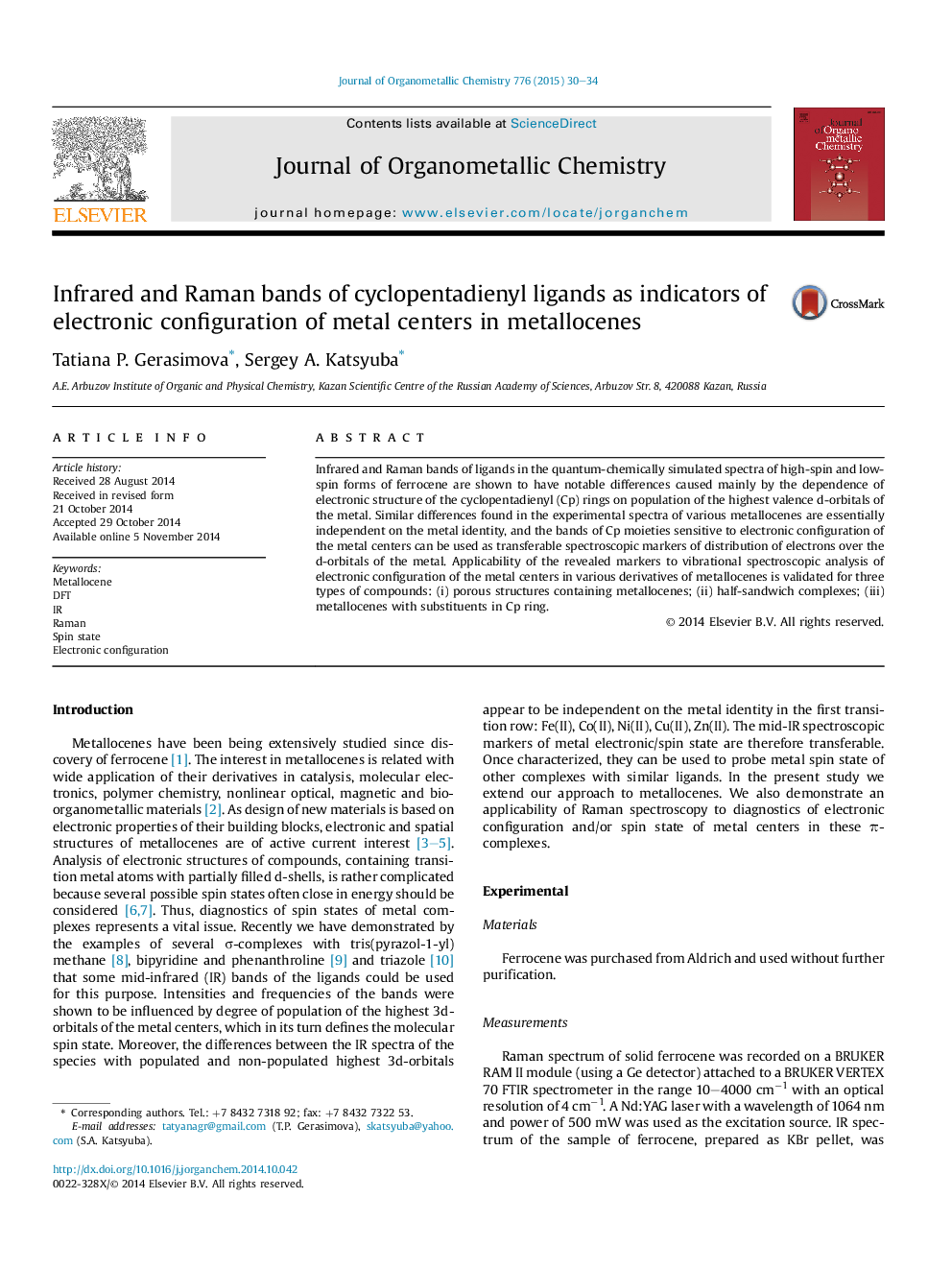| Article ID | Journal | Published Year | Pages | File Type |
|---|---|---|---|---|
| 1322161 | Journal of Organometallic Chemistry | 2015 | 5 Pages |
•IR and Raman bands of Cp ligands are sensitive to electronic configuration of metal.•The sensitivity is essentially independent on the metal identity.•The bands can be used as spectroscopic markers of the electronic state of metal.
Infrared and Raman bands of ligands in the quantum-chemically simulated spectra of high-spin and low-spin forms of ferrocene are shown to have notable differences caused mainly by the dependence of electronic structure of the cyclopentadienyl (Cp) rings on population of the highest valence d-orbitals of the metal. Similar differences found in the experimental spectra of various metallocenes are essentially independent on the metal identity, and the bands of Cp moieties sensitive to electronic configuration of the metal centers can be used as transferable spectroscopic markers of distribution of electrons over the d-orbitals of the metal. Applicability of the revealed markers to vibrational spectroscopic analysis of electronic configuration of the metal centers in various derivatives of metallocenes is validated for three types of compounds: (i) porous structures containing metallocenes; (ii) half-sandwich complexes; (iii) metallocenes with substituents in Cp ring.
Graphical abstractMid-IR and Raman bands of Cp ligand, which change according to whether the highest valence d-orbitals of metal centers in metallocenes are populated or vacant are revealed. The bands can be used as spectroscopic markers of the electronic state of metal centers in metallocenes.Figure optionsDownload full-size imageDownload as PowerPoint slide
